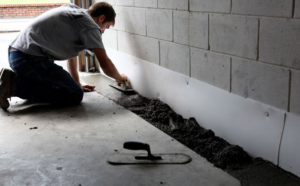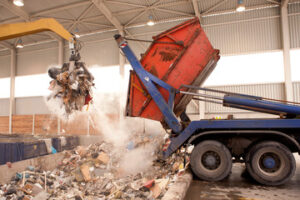Pest control involves controlling unwanted organisms that damage property or introduce diseases. Some of these organisms include rodents, insects and birds that contaminate food products.
Threshold levels, based on esthetic or health considerations, have been established for many pests. These levels prompt action if pest numbers reach unacceptable levels. Contact Killian Pest Control now!

Nematodes are microscopic worms that can be used to kill off harmful insects. They’re especially effective against cockroaches.
Prevention
Pests can cause damage that threatens the health and welfare of people and pets. They also carry disease-causing bacteria and viruses that can make humans and other animals sick. To reduce their numbers and the problems they cause, some people use preventive measures to keep them away from their homes. Other people call upon pest control services to deal with an infestation that they cannot stop on their own.
Preventive measures can be used on plants, food, structures, or the surrounding environment to discourage pests from occurring. They can include removing sources of food, water, or shelter that attract them; sealing cracks and crevices that they may enter; and keeping garbage, compost piles, and other places where they are not wanted, properly stored or disposed of. These measures can be taken in conjunction with other pest control methods to maximize their effectiveness.
Physical controls are devices and machines that physically trap or dissuade pests. They can include traps, screens, fences, radiation, and other techniques. Biological controls include parasites, predators, and pathogens that attack and kill pests or limit their growth. These can be supplemented by releasing enemies that have been modified in some way to make them more effective at controlling the pests, such as sterile males or hormones that suppress reproduction.
Chemical controls include sprays, powders, and baits. They are typically designed to kill or repel the pests, but they can harm other organisms as well. Integrated pest management (IPM) techniques, which emphasize monitoring and scouting to identify pest problems before they become serious, can help reduce the need for chemical controls.
Pests can be continuous, which means they are always present and require regular control, or sporadic, which means they appear intermittently and need treatment only under certain conditions. Some pests, such as weeds and some plant diseases, are predictable if the conditions that favor their development are known. Other pests, such as mosquitoes and bees, are largely unpredictable and depend on weather, temperature, and other factors. Using preventive measures is the best way to protect against them. It can also be less expensive than eliminating an existing infestation.
Suppression
Pests can carry bacteria and viruses that affect humans, pets and livestock. They also cause environmental and property damage to crops, homes and businesses.
Pest control includes prevention, suppression and eradication. Preventive measures can include changing the environment, removing food and water sources, and eliminating shelters. Chemical controls include using traps, sprays and baits to kill or deter pests. Pesticides are also used to protect plants from insects, fungi and weeds. They are also commonly used in commercial and residential settings to control cockroaches, ants, fleas, termites, bed bugs and mosquitoes.
Monitoring pest numbers can help determine when control is needed. This involves scouting or trapping to look for signs of infestation and to track the number of pests. It may also involve checking environmental conditions, such as temperature and moisture, to see if they can influence the population of a pest.
For example, higher than usual rainfall can reduce the number of weeds by preventing them from getting the water they need to grow. Cool weather can suppress insect populations by limiting their activity and decreasing their growth. Insect hormones may alter their development to prevent them from reaching their adult forms in colder temperatures.
The most effective ways to deter pests are keeping food in sealed containers and storing it away from possible access points like doors, windows and walls. Clutter can provide places for pests to hide and breed, so removing it is helpful. Also, caulking cracks and crevices can help prevent pests from entering buildings or settling in them.
Some pests, such as cockroaches and mice, can carry diseases that pose serious health hazards to people who live in their houses or work in offices. Their droppings can contaminate food and water supplies. They can also trigger asthma attacks and allergic reactions in sensitive individuals. For these reasons, a professional pest control company should be hired to get rid of them and to keep them from coming back. Pests should be eradicated as soon as they are detected because they can multiply quickly. The discarded body parts of dead rodents and insects can also contaminate indoor air, triggering asthma attacks in sensitive individuals and affecting the health of people with respiratory problems.
Eradication
Pests can damage or destroy property, crops, and livestock. They can also spread diseases to people and pets. Pest control is essential to protect public health by stopping the spread of disease carried by pests, safeguard agriculture and food supplies, preserve property from damage, and maintain ecological balance by preventing invasive pest species from disrupting ecosystems. Pests can include insects (such as cockroaches, termites, and bed bugs), rodents (such as rats, mice, and squirrels), birds, weeds, and other unwanted organisms.
Eradication as a part of pest control is a rare goal in outdoor pest situations, and is usually reserved for highly publicized, large-scale pest management programs such as those for the Mediterranean fruit fly, gypsy moth, or fire ant. However, eradication can be an important goal in enclosed environments where certain pests are difficult to prevent or contain. For example, eradication is often used to rid hospitals and other buildings of the pests that carry diseases like malaria, encephalitis, and Guinea worm.
Pesticides are a powerful tool in the pest control arsenal, but they must be used with care and skill. For example, only qualified pest control technicians should have access to chemical pesticides. Using too much or applying it at the wrong time can be harmful to people and pets, and may even cause environmental problems.
The most effective way to use pesticides is as part of an integrated pest control plan, which involves combining physical barriers and traps with chemicals. This helps minimize the amount of pesticide needed to achieve the desired result.
It is also important to remember that not all pesticide failures are caused by pest resistance. Sometimes pesticides fail to kill the pests because they were not identified correctly, or because they were at a stage in their life cycle or location that made them less susceptible to the pesticide. For these reasons, it is important to always read and follow the pesticide manufacturer’s instructions and apply the product in accordance with best practices.
Natural Forces
Natural forces that prevent pest populations from reaching unacceptably high levels usually include predators, parasites, and disease agents. These include insects, birds, mammals, and microorganisms such as bacteria, fungi, and viruses. Natural control is often more cost-effective than chemical control and does not have the environmental hazards of many chemicals.
The natural enemies of a particular pest predate the use of harmful chemicals to control them, and most of them existed long before humans started using them as pesticides. There are many ways to augment the activity of these natural enemies, including adding more of them to an area or introducing enemies that were not previously present. The ultimate goal of augmentation is to produce sufficient control that human efforts are not needed.
Some pests are easier to control with natural enemies than others, and fewer pests require pest controls than do others. The first step in a successful augmentation program is to know what kind of pest you are trying to control. There are several resources available to help you learn more about the pest you want to manage.
Many of the natural enemies used in augmentation can be found in nature or obtained from other growers and producers. Before they can be added to a site, however, the natural enemies must be thoroughly tested to ensure that they attack only the intended target pest and do not damage other organisms. This type of classical biological control is known as selective introduction.
Companion planting is another way that natural enemies can be augmented in a field or garden. Plants that are grown together, such as melons and radishes, provide an effective barrier against certain pests. In general, companion plants provide a good source of nutrients for the crop they are next to and offer a deterrent to pests by producing unpleasant or toxic smells or taste.
Features such as mountains and large bodies of water restrict the spread of some pests, and the availability of roosting sites and shelter can affect others. Devices such as traps, screens, barriers, nets, radiation, and altering the amount of water can also control some pests.



